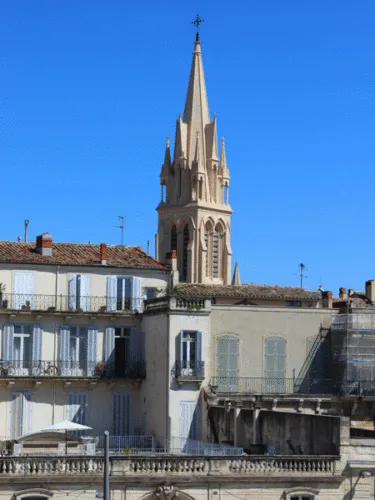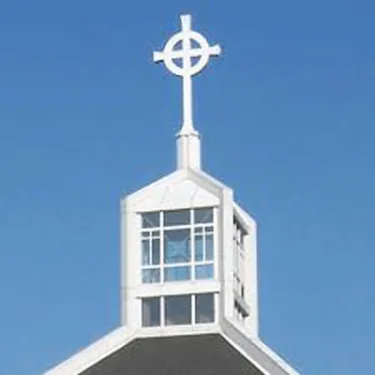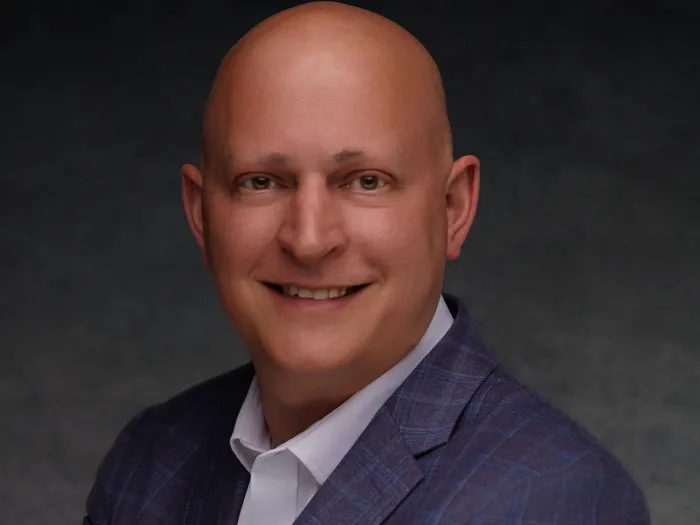Up on the (church) roof
Linda K. Smith, a sustainability consultant, speaks to Presbyterians for Earth Care about how roofs can help faith communities care for Creation


LOUISVILLE — If they listen to Linda K. Smith and others in the know, Presbyterians can be much more than God’s frozen chosen — they can become downright cool.
Smith, a semi-retired sustainability consultant, gave a talk this week for Presbyterians for Earth Care she called “Cool Churches, Cool Presbyterians.” Watch her talk ">here. Smith’s slides can be found here.
Smith had a 40-year career in a variety of roles, including as a chemical engineer, for the U.S. Green Building Council and as the director of sustainability for Central Arkansas Water. She’s a ruling elder at Second Presbyterian Church in Little Rock, Arkansas, and a board member at Ferncliff Camp & Conference Center.
Much of Smith’s talk focused on roofing choices that church building committees make. “I’m not a roofer,” she said, “but I’m very involved with the building committee at Second. I like to do that. It’s a gift I have, helping nonprofits look at facilities and make the best choices” when they’re renovating or building a new facility.
Many Presbyterians worship in older buildings, Smith noted, under roofs that need to be replaced every 20 or 30 years. “It’s one of the largest expenses you can have, other than expansion,” Smith said, asking those on the call to consider, “What else can we do to help us control our electrical cost?”
For most congregations, the number one item on church budgets after personnel costs is the summer electric bill for cooling. “The cost detracts from the mission,” she said. “If we can at least stabilize the payments we are making, that will really help our church budgets.”

As part of climate change, “we are seeing an extension of summer,” she said. Even in churches in the southern U.S., “We used to run our air conditioners from June to Labor Day. Now we’re seeing an extension of that into spring and fall. … There are more Sundays we are worried about how cool the sanctuary will be.”
Coastal communities in Europe have long dealt with the challenge by painting their homes, workplaces churches and even their roofs white. After a brief lesson on radiation, conduction and convection, Smith brought up the solar reflectance index, which is a measure of a constructed surface’s ability to reflect solar heat. White or light-colored roofs can help save up to 35% on a church’s air-conditioning bill. “Dark roofs look good with brick, but it’s time to move on,” Smith said. “We’ve got to think about light gray or white roofs.”
California, New York City and other communities incentivize choosing light-colored roofs, “which are especially appropriate for flat roofs, like a fellowship hall, a Sunday school wing or a youth building” that’s added to a church campus, Smith said. The most important maintenance issue with a white roof is to “make sure you keep it clean” by sweeping or using a leaf-blower or, occasionally, a pressure-washer.
She also advocates for lighter-color options for pitched roofs, and offered a checklist for churches selecting a roofing contractor that includes finding one who’s installed 100 versions of the kind of roof a church has selected, one who cares about sustainability and is, preferably, a second- or third-generation roofer in the community.

Smith had photos of churches making thoughtful roofing choices as they added on, including Second Presbyterian Church in Louisville, Kentucky. She also offered ideas and guidelines on planting trees and installing insulation as well as zoning the church’s air-conditioning system.
At Second Presbyterian Church in Little Rock, where Smith attends, the roof had been leaking since nearly the day it was installed. About 15 years ago, the church added a taller Celtic cross and a cupula, which not only has solved leaking and ventilation problems, but releases “a lot of heat” and “elevated the church’s presence in the community,” Smith said. “It was a great solution to the problem.”
Among Smith’s top Creation-care suggestions for churches:
- Install a white, stronger roof at replacement
- Increase attic insulation
- Create a schedule for the HVAC system
- Zone the HVAC system
- Use appropriate HVAC temperature ranges for the season
- Plant trees
- Use native landscaping to reduce irrigation
- Employ healthy practices around utensils and dishes at mealtimes
- Implement wellness programs
- Promote the use of electric vehicles and solar panels.
“I have been thinking long and hard about writing a book for churches and building committees,” Smith said during a question-and-answer session that followed her presentation. “So many members of building committees do this once and they may not think about the questions I might think about.”
The next webinar Presbyterians for Earth Care plans to offer begins at 7:30 p.m. Eastern Time on Sept. 25. The Rev. Dr. Shelly Barrick Parsons, executive director of Capital Trees in Richmond, Virginia, and Scharmel Roussel, executive director of Arkansas Interfaith Power & Light, will present on “Edible Landscapes and Climate Resilient Communities.” Learn more here.
You may freely reuse and distribute this article in its entirety for non-commercial purposes in any medium. Please include author attribution, photography credits, and a link to the original article. This work is licensed under a Creative Commons Attribution-NonCommercial-NoDeratives 4.0 International License.




